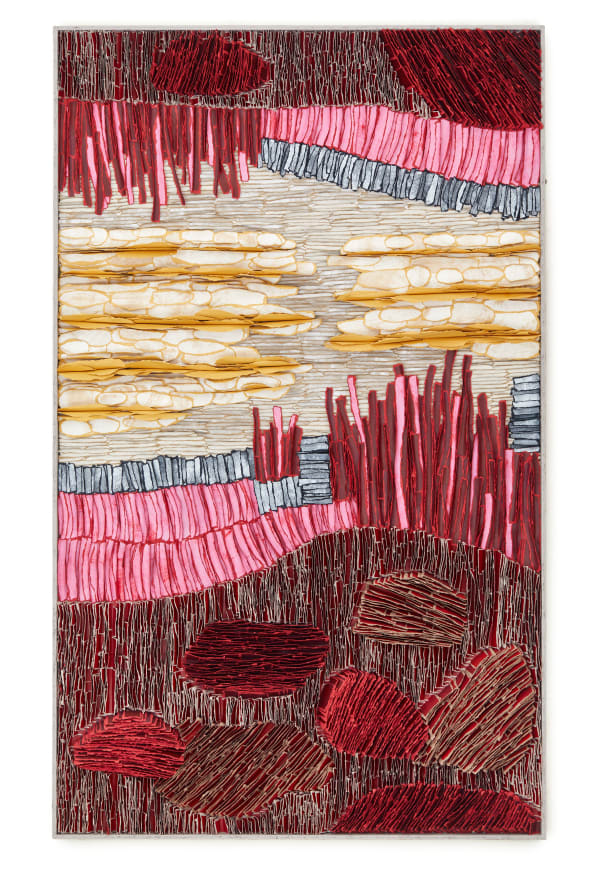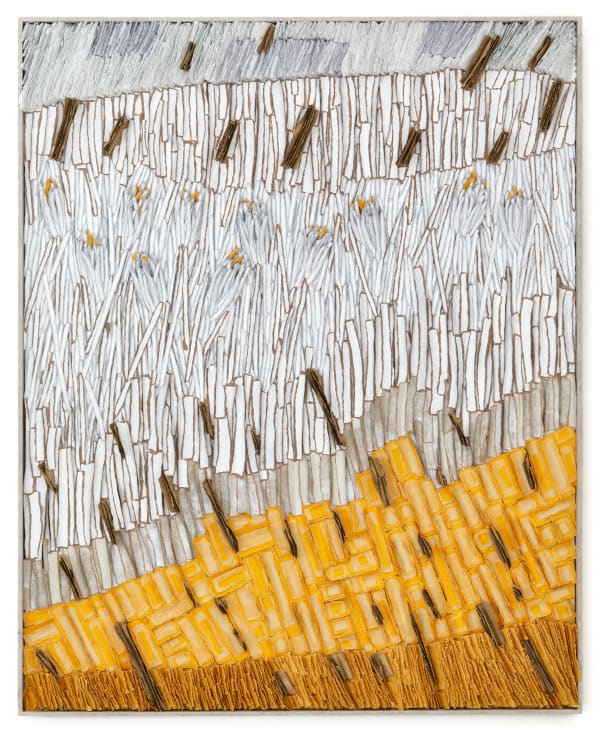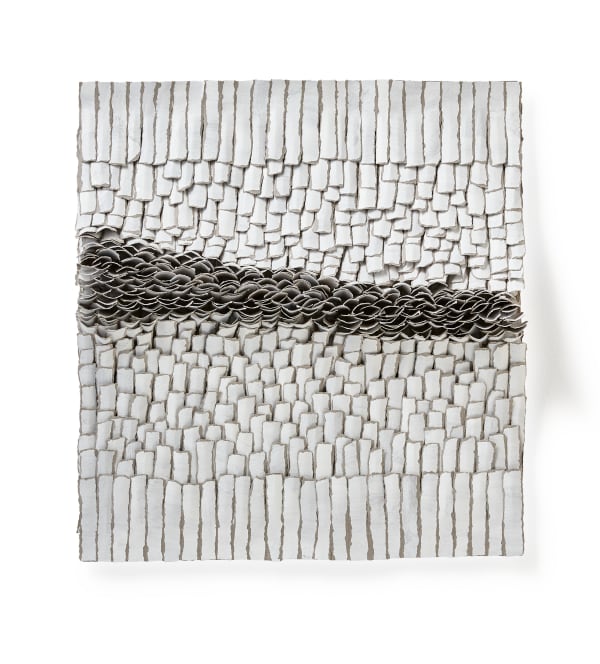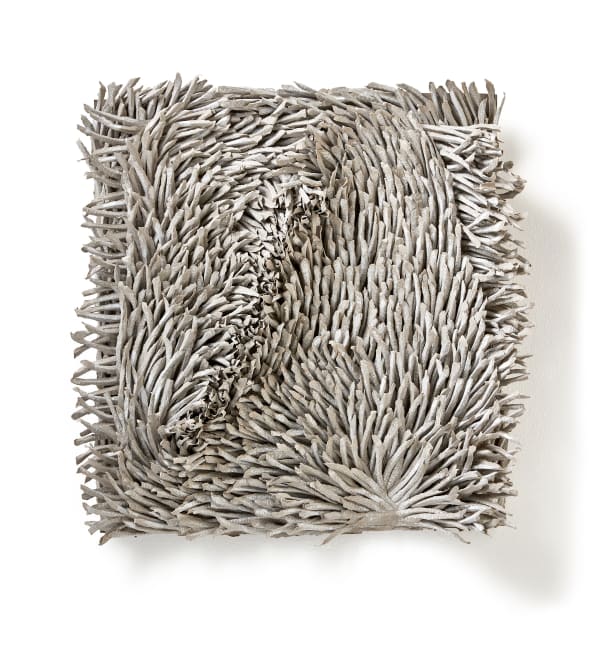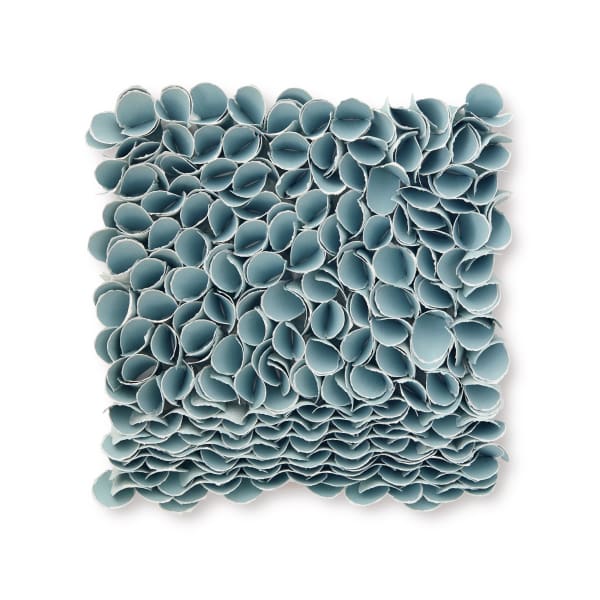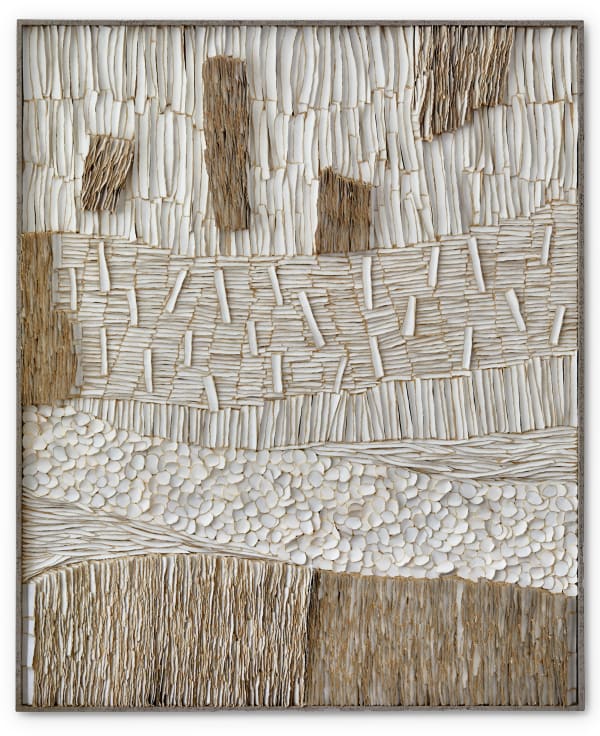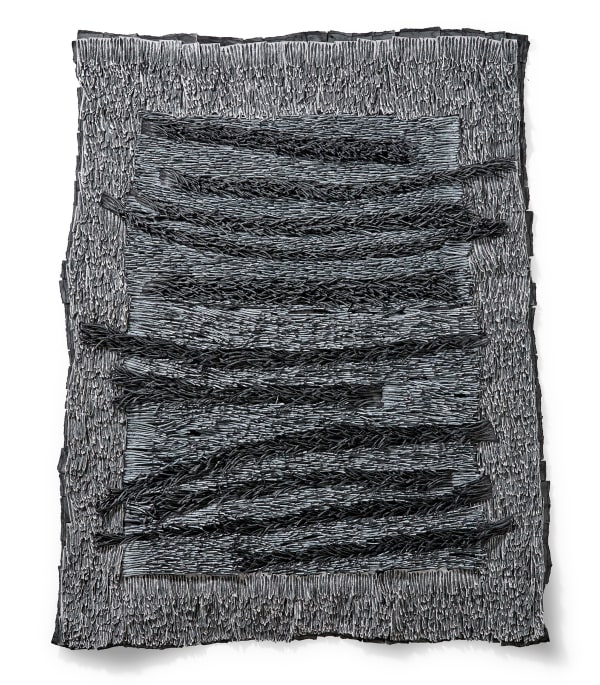The Selection section represents a small, selected overview of Severijns art practice. It shows the exhibition, the gallery or museum representing the artwork, and the series to which the art piece belongs.
For a complete overview of Severijns' oeuvre, you can explore the Projects page, which show all series and commissioned artworks. Projects
-
-
 No. 5, 2025Exhibition “Light as a Feather” | TINT Gallery 2025
No. 5, 2025Exhibition “Light as a Feather” | TINT Gallery 2025
Series: Fading Worlds vs Emerging Worlds -
 Hope, 2023Exhibition “Moon” | Freshpaint 2023Series: Wild Growth
Hope, 2023Exhibition “Moon” | Freshpaint 2023Series: Wild Growth -
 Brotherhood, 2024Series: Fading Worlds vs Emerging Worlds
Brotherhood, 2024Series: Fading Worlds vs Emerging Worlds -
 Wild Growth 3, 2024Exhibition “Symbiosis” | Wertheimer GallerySeries: Wild Growth
Wild Growth 3, 2024Exhibition “Symbiosis” | Wertheimer GallerySeries: Wild Growth
-
 No. 32, 2020Exhibition “Sentiment of Change” | Periscope Gallery
No. 32, 2020Exhibition “Sentiment of Change” | Periscope Gallery
Series: Movement & Rhythm -
 No. 37, 2021Exhibition “Sentiment of Change” | Gallery PeriscopeSeries: Movement & Rhythm
No. 37, 2021Exhibition “Sentiment of Change” | Gallery PeriscopeSeries: Movement & Rhythm -
 No. 36, 2021Exhibition “Sentiment of Change” | Periscope Gallery
No. 36, 2021Exhibition “Sentiment of Change” | Periscope Gallery
Series: Movement & Rhythm -
 Breeze, 2022Exhibition “Paper Fascination” | Gustav Lubcke Museum, GermanySeries: Wind
Breeze, 2022Exhibition “Paper Fascination” | Gustav Lubcke Museum, GermanySeries: Wind
-
 No. 7, 2018Exhibition “Art on Paper” | Brooklyn Gallery, New YorkSeries: Movement & Rhythm
No. 7, 2018Exhibition “Art on Paper” | Brooklyn Gallery, New YorkSeries: Movement & Rhythm -
 Tree Bark, 2024Exhibition “Light as a Feather” | TINT Gallery 2025Series: Movement & Rhythm
Tree Bark, 2024Exhibition “Light as a Feather” | TINT Gallery 2025Series: Movement & Rhythm -
 No. 6, 2018Exhibition “Art on Paper” | Brooklyn Gallery, New York
No. 6, 2018Exhibition “Art on Paper” | Brooklyn Gallery, New York
Series: Movement & Rhythm -
 No. 21, 2019Series: Movement & Rhythm
No. 21, 2019Series: Movement & Rhythm
-
 Sea shells 2, 2024Series: Movement & Rhythm
Sea shells 2, 2024Series: Movement & Rhythm -
 No. 1, 2022Exhibition “Charcoal and Chlorophyll” | Wertheimer Gallery
No. 1, 2022Exhibition “Charcoal and Chlorophyll” | Wertheimer Gallery
Series: Reflection -
 No. 3, 2022Exhibition “Moon” | Freshpaint 2023
No. 3, 2022Exhibition “Moon” | Freshpaint 2023
Series: Reflection -
 Virgin Landscapes, 2024Exhibition “Symbiosis” | Wertheimer GallerySeries: Fading Worlds vs Emerging Worlds
Virgin Landscapes, 2024Exhibition “Symbiosis” | Wertheimer GallerySeries: Fading Worlds vs Emerging Worlds
-
 Noe, 2019Part of the permanent collection | Gustav Lubcke MuseumSeries: Protective Blankets
Noe, 2019Part of the permanent collection | Gustav Lubcke MuseumSeries: Protective Blankets -
 Scratched, 2018Exhibition “Treasures of Nature” | Beit London Gallery
Scratched, 2018Exhibition “Treasures of Nature” | Beit London Gallery
Series: Protective Blankets -
 No. 52, 2023Exhibition “Charcoal and Chlorophyll” | Wertheimer Gallery
No. 52, 2023Exhibition “Charcoal and Chlorophyll” | Wertheimer Gallery
Series: Movement & Rhythm -
 Eucalyptus Bark, 2021Series: Eucalyptus Bark
Eucalyptus Bark, 2021Series: Eucalyptus Bark
-


